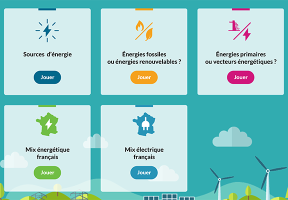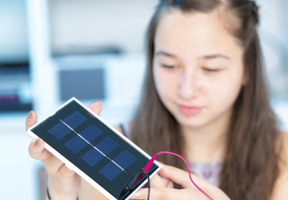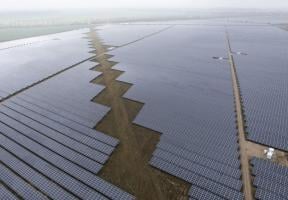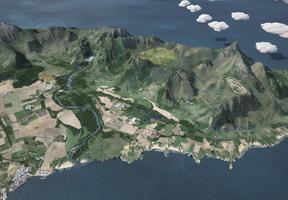What is floating photovoltaics?
10 min read
Floating photovoltaics (or floatovoltaics) is a technology in which solar panels are installed on structures that float on a body of water, such as lakes or irrigation ponds. Still a small minority compared to photovoltaics, the technology is rapidly gaining ground, particularly in Asia. Planète Energies tells you all you need to know about floatovoltaics!
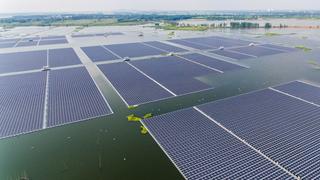
© STR / AFP - The floating solar farm in Huainan, China is made up of 160,000 panels, attached to each other in a huge mosaic structure.
How does it work?
The principle behind a floating solar plant is simple. Standard photovoltaic panels are installed a few centimeters above water level, on interconnected floating structures that form a giant modular blanket. The floating plant, often made up of several thousand panels, is held in place by anchors at the bottom of the water body, or on the banks, so that it does not drift in the wind.
Different types of water bodies can be chosen for floatovoltaics, such as artificial reservoirs close to hydroelectric dams, irrigation ponds or industrial water basins, water treatment sites, quarry lakes or flooded mines, and lagoons. In short, areas of calm water that are not used for tourism, sailing, agriculture or any other purpose.
Their size may vary significantly. Some parks are very small for local use, like in Cintegabelle in southwest France: 830 panels over 1,500 m2. In comparison, the Lazer power plant in France (Hautes-Alpes), inaugurated in summer 2023, has 50,000 panels over 170,000 m2 (17 hectares). It covers over half the reservoir of the neighboring hydroelectric plant. As for the huge Huainan FPV park in China, installed in 2017, it stretches over 800,000 m2, the equivalent of 110 soccer fields!
Pros and cons
The often small surface area of water bodies limits the capacity of floating wind farms which are generally counted in tens of megawatts (MW), whereas the capacity of the vast onland parks in India or China exceeds 1,000 MW.
Advocates of floatovoltaics however, list a whole series of advantages:
- The first is the fact floatovoltaic sites are much cheaper than onland areas, where land may be viable for building, or dedicated to agriculture or tourism; Japan, where lack of space is a real issue, was the first country to test floatovoltaic parks.
- The aquatic environment prevents photovoltaic sensors from overheating, thereby improving their yield. Panels are often double-sided, which means they also capture the sun’s rays reflected off the water.
- Installation is usually more onerous than for onland parks, but this is offset by the fact that the surface does not need to be leveled.
The environmental issue is a subject of debate. The floatovoltaic park does not generate pollution, limits water evaporation and prevents the proliferation of algae. Ecologists however challenge the surface coverage of water bodies and consider that if too extensive, it poses a threat to aquatic life.
Global development
Floatovoltaics has been developing rapidly since 2015, even if its share in power production is still moderate. Total global capacity was estimated at 1.3 GW in 2018 and 5.7 GW in 2022. In comparison, global photovoltaic capacity was close to 2,100 GW in 2022. Experts at the predict 60 GW by 2030.
China alone accounts for 75% of total capacity, followed by Japan (16%) and Korea (6%). The front runner in Europe is the United Kingdom. However countries such as the United States, Brazil and India have very high potential in terms of water bodies and should soon emerge as major players on the floatovoltaic scene.

